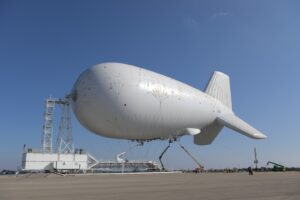
Israel started initial setup and testing this week of a new balloon equipped with a sensor it seeks to use for detection and early warning of cruise missiles and other threats. The process started by beginning inflation of the new High Availability Aerostat System (HAAS) equipped with an Elevated Sensor (ES) in northern Israel at unspecified Israel Missile Defense Organization (IMDO) facilities, the U.S. Missile Defense Agency (MDA) said Nov. 3. An aerostat is the name for an aircraft that…

 By
By 











